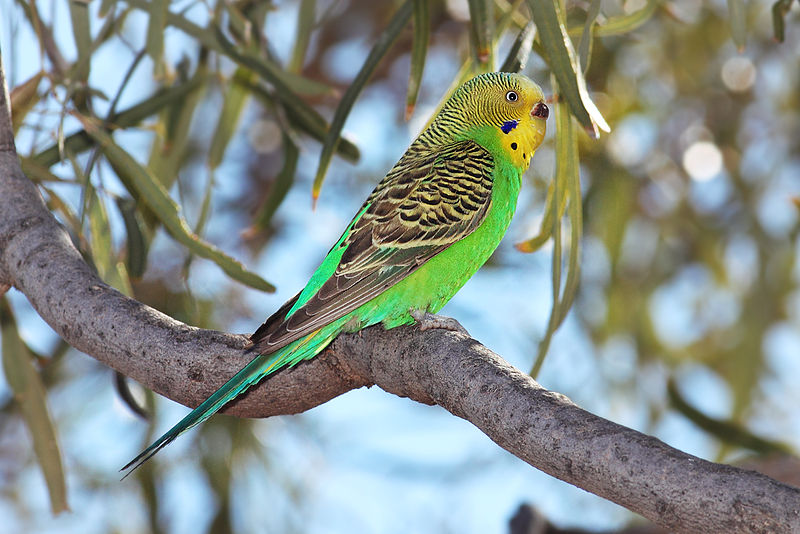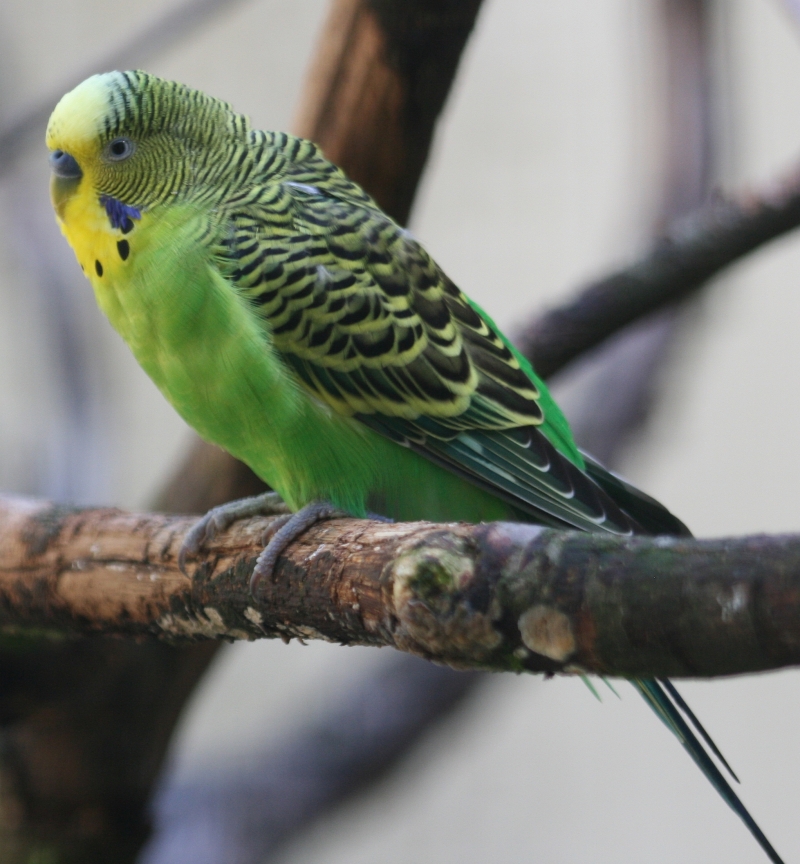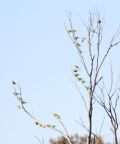
©Benjamint444: Female or juvenile Budgerigar (Melopsittacus undulatus) lacking blue cere at top of beak

©Kirk: Head of Male Budgerigar (Melopsittacus undulatus) showing blue cere that is a feature of males
Colours
Distinguishing features
They have a light green body colour (abdomen and rumps), while their mantles (back and wing coverts) have pitch-black mantle markings (blackish in fledgelings and immatures) edged in clear yellow undulations. The forehead and face is yellow in adults but with blackish stripes down to the cere (nose) in young individuals until they change into their adult plumage around three to four months of age. They have small, purple cheek patches and a series of three black spots across each side of their throats (called throat spots). The two outermost throat spots are situated at the base of each cheek patch. The tail is cobalt (dark-blue); and outside tail feathers display central yellow flashes. Their wings have greenish-black flight feathers and black coverts with yellow fringes along with central yellow flashes, which only become visible in flight or when the wings are outstretched. Bills are olive grey and legs blueish-grey, with zygodactyl toes.
The colour of the cere (the area containing the nostrils) differs between the sexes, being royal blue in males, pale brown to white (nonbreeding) or brown (breeding) in females, and pink in immatures of both sexes (usually of a more even purplish-pink colour in young males). Some female budgerigars develop brown cere only during breeding time, which later returns to the normal colour. Young females can often be identified by a subtle, chalky whiteness that starts around the nostrils. (Wikipedia)
Size
- Up to 18 cm (Length of specimen) - applies to Wild specimens (Domestic specimens are generally larger than wild specimens)
Wingspan
- From 25 cm to 30 cm
Synonyms
Distribution
Distribution and habitat preferences
Budgerigars are nomadic birds found in open habitats, primarily in scrublands, open woodlands, and grasslands of Australia. (Wikipedia)
Audio recordings
Behaviour
The birds are normally found in small flocks, but can form very large flocks under favourable conditions. The nomadic movement of the flocks is tied to the availability of food and water. Drought can drive flocks into more wooded habitat or coastal areas. (Wikipedia)
Diet
They feed on the seeds of spinifex, grass seeds, and sometimes ripening wheat. (Wikipedia)



